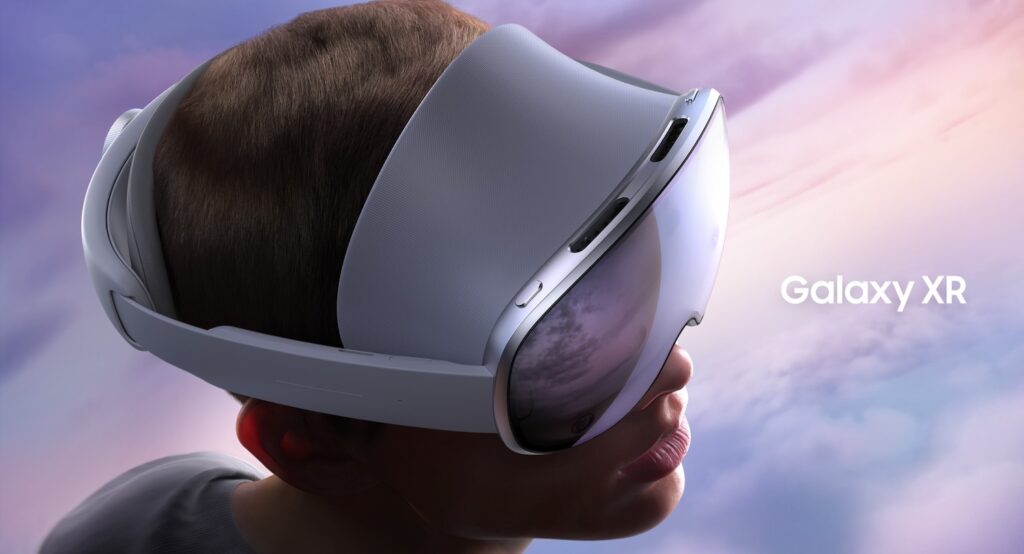
Samsung has launched the Galaxy XR, a cutting-edge virtual reality headset built on the newly developed Android XR platform. This device aims to revolutionize immersive AI experiences, transforming daily tasks and entertainment. Currently, the Galaxy XR is available exclusively in the United States and South Korea, with a price tag of $1,799 USD.
The introduction of the Galaxy XR comes at a time when comparisons with Apple’s Vision Pro are inevitable. Apple’s device is priced nearly double at $3,499 USD, highlighting Samsung’s competitive pricing strategy. Won-Joon Choi, Chief Operating Officer of Mobile eXperience (MX) Business at Samsung Electronics, stated, “With Galaxy XR, Samsung is introducing a brand-new ecosystem of mobile devices.” He emphasized that the headset expands the vision for mobile AI into new immersive possibilities, moving XR from concept to everyday reality.
Android XR: A New Era for Virtual Reality
Sameer Samat, President of Android Ecosystem at Google, expressed enthusiasm about the partnership with Samsung, saying, “Android XR is the first Android platform built entirely for the Gemini era, and we are incredibly excited to take a significant leap forward today with the launch of Galaxy XR.” This collaboration aims to unlock new ways to explore, connect, and create, building an open, unified platform for the next evolution of computing.
The Galaxy XR is the first device to leverage the Android XR platform, offering users novel ways to interact with their surroundings. The integration of Gemini at the system level allows for intuitive interactions using voice, vision, and gestures. The headset’s ability to recognize and respond to its environment creates a natural and conversational user experience.
Technical Specifications and Design
Samsung’s Galaxy XR is engineered for comfort and extended use. Its lightweight yet robust design features an ergonomically balanced frame, distributing weight evenly across the user’s head. The separate battery pack contributes to the device’s compactness and comfort.
Under the hood, the Galaxy XR is powered by the Snapdragon XR2+ Gen 2 processor, with AI capabilities delivered through the Qualcomm Hexagon NPU Plus. It boasts 16GB of RAM and 256GB of storage, with a battery life of up to 2.5 hours. The device includes advanced sensors and cameras for tracking head, hand, and eye movements, eliminating the need for physical controllers.
“Galaxy XR will give users a whole new dimension of experiences that elevate existing apps like Google Maps, YouTube, Circle to Search, and Google Photos to a whole new level,” Samsung claims.
Expanding the XR Ecosystem
Samsung has built the XR ecosystem in collaboration with Google and Qualcomm, positioning AI at the forefront. The Android XR platform is designed to be scalable across various platforms and form factors, including headsets and AI glasses. This development represents a significant step forward in creating a versatile and open platform for the future of computing.
The Galaxy XR is not only a consumer device but also targets enterprise applications, such as virtual training. Samsung is also exploring AI eyeglasses as part of its broader XR roadmap, collaborating with lifestyle brand Warby Parker and fashion-focused Gentle Monster to merge functionality with style.
Future Prospects and Market Impact
While Samsung has not yet announced a release date or pricing for the Galaxy XR in Australia, the device’s launch marks a pivotal moment in the XR industry. By offering a high-quality, immersive experience at a competitive price, Samsung is setting a new benchmark for virtual reality technology.
The move represents a strategic effort to capture a significant share of the XR market, which is expected to grow exponentially in the coming years. As Samsung continues to innovate and expand its XR ecosystem, the Galaxy XR could become a cornerstone of the company’s strategy to lead in the next generation of immersive technology.







